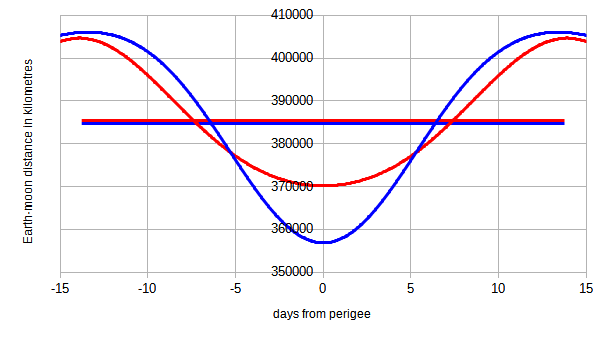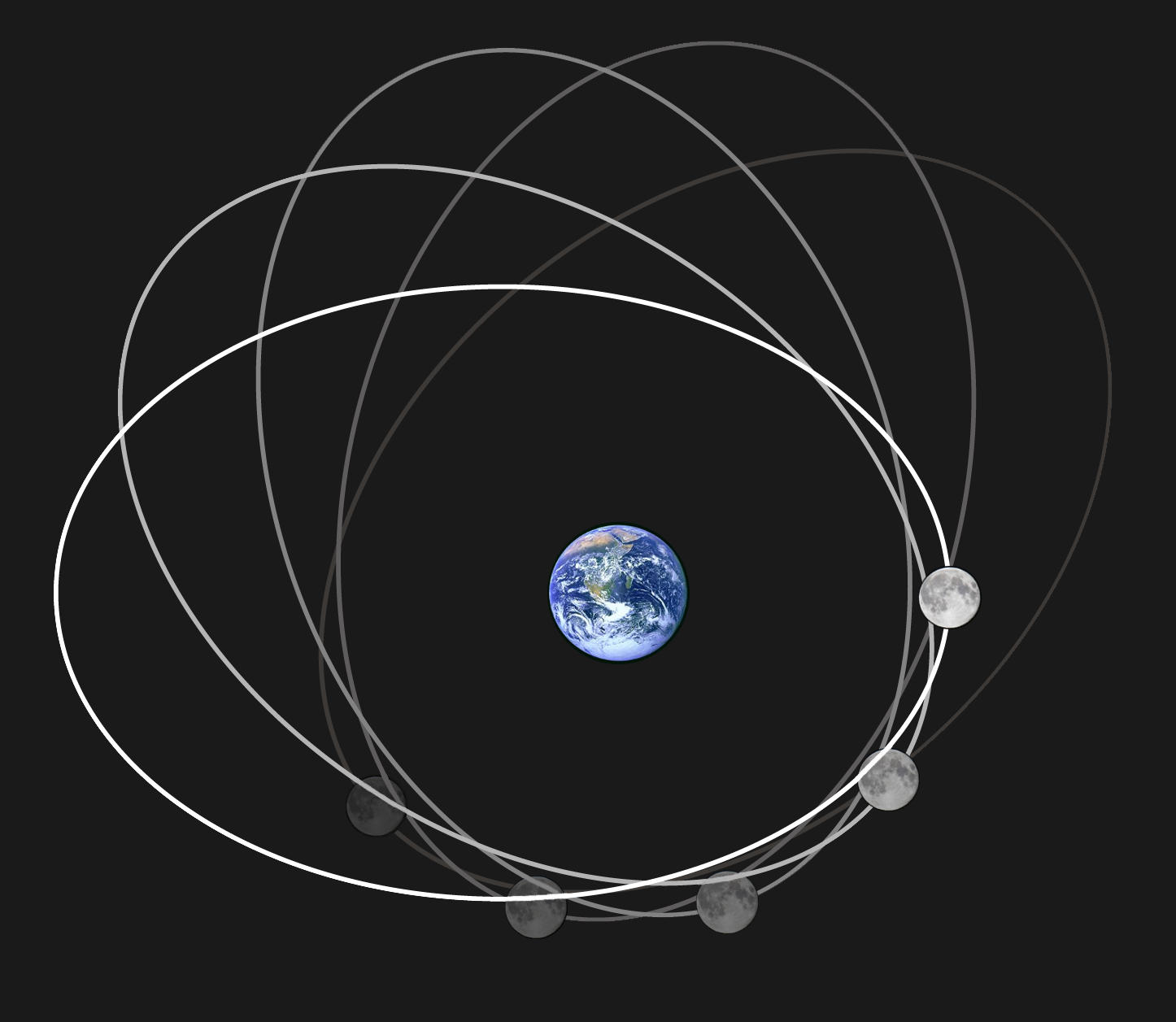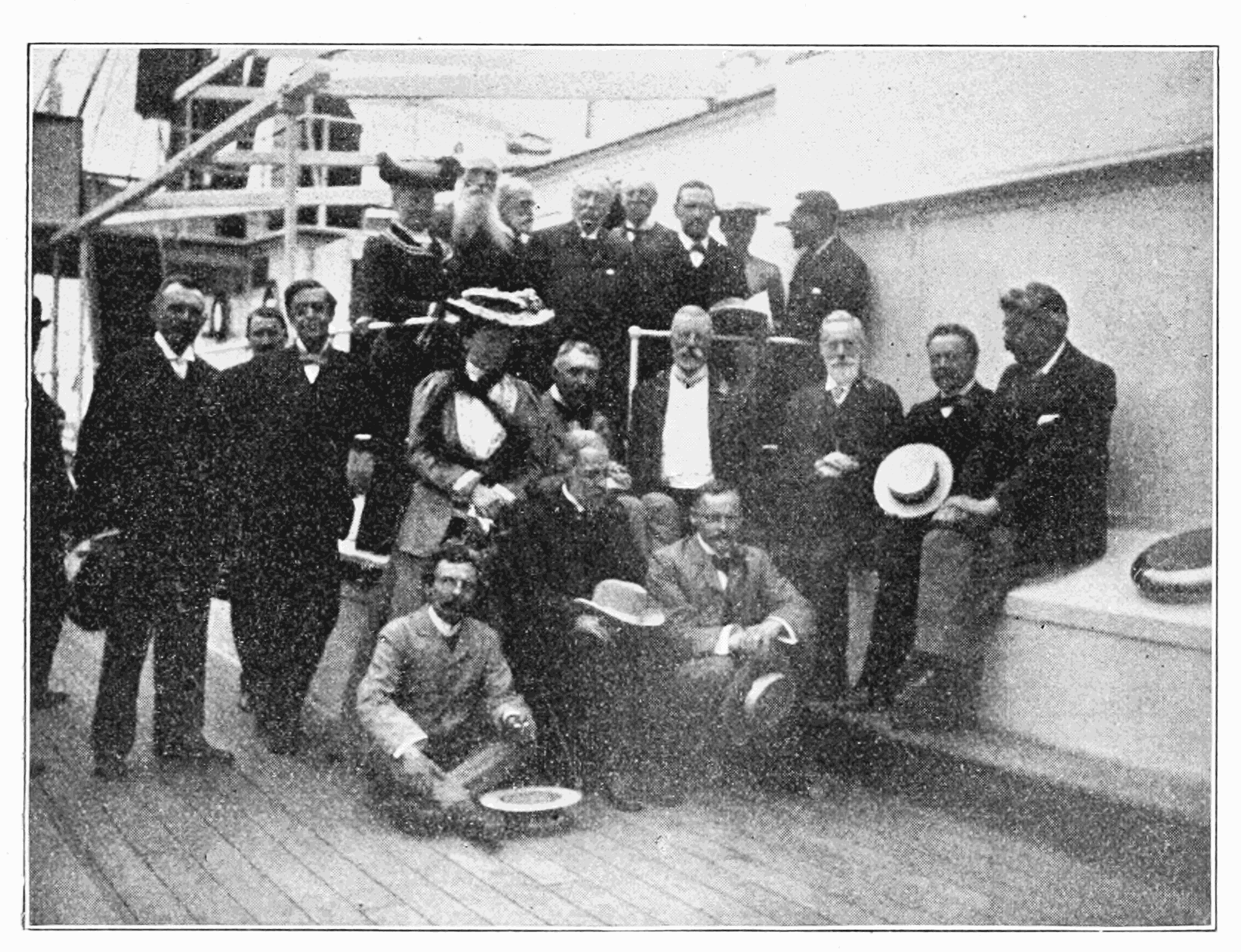|
Lunar Distance
The instantaneous Earth–Moon distance, or distance to the Moon, is the distance from the center of Earth to the center of the Moon. Lunar distance (LD or \Delta_), or Earth–Moon characteristic distance, is a unit of measure in astronomy. More technically, it is the semi-major axis of the geocentric lunar orbit. The lunar distance is on average approximately , or 1.28 light-seconds; this is roughly 30 times Earth's diameter or 9.5 times Earth's circumference. Around 389 lunar distances make up an AU astronomical unit (roughly the distance from Earth to the Sun). Lunar distance is commonly used to express the distance to near-Earth object encounters. Lunar semi-major axis is an important astronomical datum; the few millimeter precision of the range measurements determines semi-major axis to a few decimeters; it has implications for testing gravitational theories such as general relativity, and for refining other astronomical values, such as the mass, radius, and rotation of Ea ... [...More Info...] [...Related Items...] OR: [Wikipedia] [Google] [Baidu] |
Orbit Of The Moon
The Moon orbits Earth in the prograde direction and completes one revolution relative to the Vernal Equinox and the stars in about 27.32 days (a tropical month and sidereal month) and one revolution relative to the Sun in about 29.53 days (a synodic month). Earth and the Moon orbit about their barycentre (common centre of mass), which lies about from Earth's centre (about 73% of its radius), forming a satellite system called the Earth–Moon system. On average, the distance to the Moon is about from Earth's centre, which corresponds to about 60 Earth radii or 1.282 light-seconds. With a mean orbital velocity of 1.022 km/s (0.635 miles/s, 2,286 miles/h), the Moon covers a distance approximately its diameter, or about half a degree on the celestial sphere, each hour. The Moon differs from most satellites of other planets in that its orbit is close to the ecliptic plane instead of to its primary's (in this case, Earth's) equatorial plane. The Moon's orbital plan ... [...More Info...] [...Related Items...] OR: [Wikipedia] [Google] [Baidu] |
Astronomical Unit
The astronomical unit (symbol: au, or or AU) is a unit of length, roughly the distance from Earth to the Sun and approximately equal to or 8.3 light-minutes. The actual distance from Earth to the Sun varies by about 3% as Earth orbits the Sun, from a maximum ( aphelion) to a minimum ( perihelion) and back again once each year. The astronomical unit was originally conceived as the average of Earth's aphelion and perihelion; however, since 2012 it has been defined as exactly (see below for several conversions). The astronomical unit is used primarily for measuring distances within the Solar System or around other stars. It is also a fundamental component in the definition of another unit of astronomical length, the parsec. History of symbol usage A variety of unit symbols and abbreviations have been in use for the astronomical unit. In a 1976 resolution, the International Astronomical Union (IAU) had used the symbol ''A'' to denote a length equal to the ast ... [...More Info...] [...Related Items...] OR: [Wikipedia] [Google] [Baidu] |
Ernest William Brown
Ernest William Brown FRS (29 November 1866 – 22 July 1938) was an English mathematician and astronomer, who spent the majority of his career working in the United States and became a naturalised American citizen in 1923. His life's work was the study of the Moon's motion (lunar theory) and the compilation of extremely accurate lunar tables. He also studied the motion of the planets and calculated the orbits of Trojan asteroids. Life and career Brown was born in Hull, England, the second of four children of William and Emma Brown (née Martin). His father was originally a farmer and later became a timber merchant. His mother and younger brother died of scarlet fever in 1870, when Brown was not quite 4 years old. He and his two sisters were then looked after by a maiden aunt, until his father remarried five years later. Education and early career Brown was educated at Totteridge Park School, Hertfordshire (now part of Dorset House School) anHull and East Riding College ... [...More Info...] [...Related Items...] OR: [Wikipedia] [Google] [Baidu] |
Semi-major And Semi-minor Axes
In geometry, the major axis of an ellipse is its longest diameter: a line segment that runs through the center and both foci, with ends at the two most widely separated points of the perimeter. The semi-major axis (major semiaxis) is the longest semidiameter or one half of the major axis, and thus runs from the centre, through a focus, and to the perimeter. The semi-minor axis (minor semiaxis) of an ellipse or hyperbola is a line segment that is at right angles with the semi-major axis and has one end at the center of the conic section. For the special case of a circle, the lengths of the semi-axes are both equal to the radius of the circle. The length of the semi-major axis of an ellipse is related to the semi-minor axis's length through the eccentricity and the semi-latus rectum \ell, as follows: The semi-major axis of a hyperbola is, depending on the convention, plus or minus one half of the distance between the two branches. Thus it is the distance from the cente ... [...More Info...] [...Related Items...] OR: [Wikipedia] [Google] [Baidu] |
Retroreflector
A retroreflector (sometimes called a retroflector or cataphote) is a device or surface that reflects radiation (usually light) back to its source with minimum scattering. This works at a wide range of angle of incidence, unlike a planar mirror, which does this only if the mirror is exactly perpendicular to the wave front, having a zero angle of incidence. Being directed, the retroflector's reflection is brighter than that of a diffuse reflector. Corner reflectors and cat's eye reflectors are the most used kinds. Types There are several ways to obtain retroreflection: Corner reflector A set of three mutually perpendicular reflective surfaces, placed to form the internal corner of a cube, work as a retroreflector. The three corresponding normal vectors of the corner's sides form a basis in which to represent the direction of an arbitrary incoming ray, . When the ray reflects from the first side, say x, the ray's ''x''-component, ''a'', is reversed to −''a'', while th ... [...More Info...] [...Related Items...] OR: [Wikipedia] [Google] [Baidu] |
Accuracy And Precision
Accuracy and precision are two measures of '' observational error''. ''Accuracy'' is how close a given set of measurements (observations or readings) are to their '' true value'', while ''precision'' is how close the measurements are to each other. In other words, ''precision'' is a description of '' random errors'', a measure of statistical variability. ''Accuracy'' has two definitions: # More commonly, it is a description of only ''systematic errors'', a measure of statistical bias of a given measure of central tendency; low accuracy causes a difference between a result and a true value; ISO calls this ''trueness''. # Alternatively, ISO defines accuracy as describing a combination of both types of observational error (random and systematic), so high accuracy requires both high precision and high trueness. In the first, more common definition of "accuracy" above, the concept is independent of "precision", so a particular set of data can be said to be accurate, precise, both ... [...More Info...] [...Related Items...] OR: [Wikipedia] [Google] [Baidu] |
Solar Mass
The solar mass () is a standard unit of mass in astronomy, equal to approximately . It is often used to indicate the masses of other stars, as well as stellar clusters, nebulae, galaxies and black holes. It is approximately equal to the mass of the Sun. This equates to about two nonillion ( short scale), two quintillion (long scale) kilograms or 2000 quettagrams: The solar mass is about times the mass of Earth (), or times the mass of Jupiter (). History of measurement The value of the gravitational constant was first derived from measurements that were made by Henry Cavendish in 1798 with a torsion balance. The value he obtained differs by only 1% from the modern value, but was not as precise. The diurnal parallax of the Sun was accurately measured during the transits of Venus in 1761 and 1769, yielding a value of (9 arcseconds, compared to the present value of ). From the value of the diurnal parallax, one can determine the distance to the Sun from the geome ... [...More Info...] [...Related Items...] OR: [Wikipedia] [Google] [Baidu] |
Lunar Radius
The Moon is Earth's only natural satellite. It is the fifth largest satellite in the Solar System and the largest and most massive relative to its parent planet, with a diameter about one-quarter that of Earth (comparable to the width of Australia). The Moon is a planetary-mass object with a differentiated rocky body, making it a satellite planet under the geophysical definitions of the term and larger than all known dwarf planets of the Solar System. It lacks any significant atmosphere, hydrosphere, or magnetic field. Its surface gravity is about one-sixth of Earth's at , with Jupiter's moon Io being the only satellite in the Solar System known to have a higher surface gravity and density. The Moon orbits Earth at an average distance of , or about 30 times Earth's diameter. Its gravitational influence is the main driver of Earth's tides and very slowly lengthens Earth's day. The Moon's orbit around Earth has a sidereal period of 27.3 days. During each synodic peri ... [...More Info...] [...Related Items...] OR: [Wikipedia] [Google] [Baidu] |
Earth's Rotation
Earth's rotation or Earth's spin is the rotation of planet Earth around its own axis, as well as changes in the orientation of the rotation axis in space. Earth rotates eastward, in prograde motion. As viewed from the northern polar star Polaris, Earth turns counterclockwise. The North Pole, also known as the Geographic North Pole or Terrestrial North Pole, is the point in the Northern Hemisphere where Earth's axis of rotation meets its surface. This point is distinct from Earth's North Magnetic Pole. The South Pole is the other point where Earth's axis of rotation intersects its surface, in Antarctica. Earth rotates once in about 24 hours with respect to the Sun, but once every 23 hours, 56 minutes and 4 seconds with respect to other distant stars ( see below). Earth's rotation is slowing slightly with time; thus, a day was shorter in the past. This is due to the tidal effects the Moon has on Earth's rotation. Atomic clocks show that a modern day is longer by about 1. ... [...More Info...] [...Related Items...] OR: [Wikipedia] [Google] [Baidu] |




